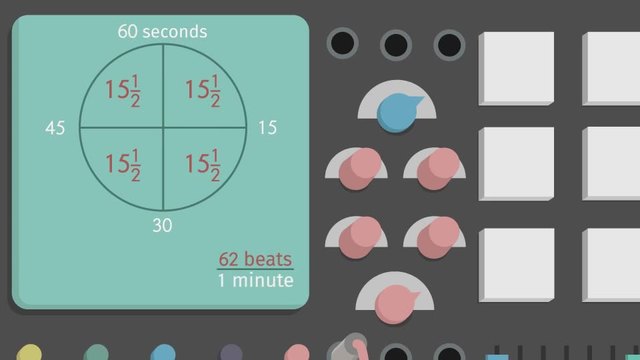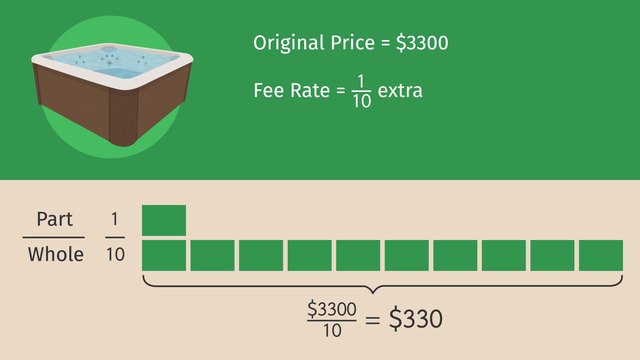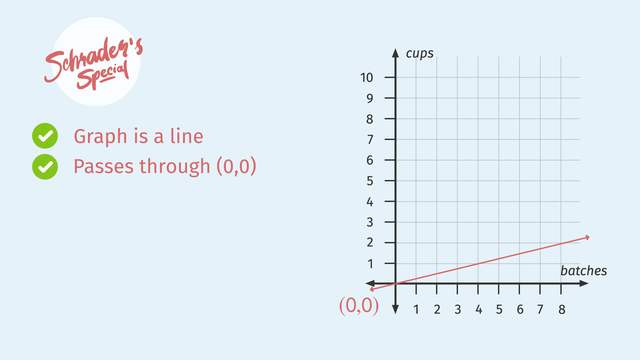Ratios and Rates Involving Fractions


Basics on the topic Ratios and Rates Involving Fractions
After this lesson you will be able to work with ratios and rates involving fractions.
The lesson begins with a ratio and the definition of a unit rate. It leads to teaching you how to convert a ratio to a unit rate by simplifying the fraction to a denominator of 1. It concludes with comparing two unit rates by finding a common denominator.
Learn about ratios and rates by helping Terence, the young monster, track his tentacle growth rate!
This video includes key concepts, notation, and vocabulary such as: ratio (a comparative, proportional relationship between two amounts); unit rate (a ratio in which one of the terms is equal to one); complex fractions (a fraction with at least one fraction in the numerator or denominator); and reciprocal (the number you multiply the fraction by to get 1).
Before watching this video, you should already be familiar with interpreting ratios and simplifying complex fractions.
After watching this video, you will be prepared to learn how to solve multi-step problems involving part-to-part and part-to-whole ratios.
Common Core Standard(s) in focus: 7.RP.A.1 A video intended for math students in the 7th grade Recommended for students who are 12-13 years
Transcript Ratios and Rates Involving Fractions
Terance is a young monster who is feeling a bit down. He is the only tentacle monster at school who has not fully grown all his tentacles yet. Sick of feeling left out, Terance trys to change his daily habits and tracks his tentacle growth rate in the process to see if any of his changes make a difference. Understanding how to work with ratios and rates involving fractions will help Terance interpret his results. Terance records his current growth rate of 3-and-a-half tentacles in 5 days. Let's convert this ratio to its unit rate so that we know how much his tentacles grow per day. Remember a unit rate is just a ratio in which one of the terms is equal to one. Writing a ratio as a unit rate will make it easier for us to make comparisons later on. Our ratio can be written as the fraction 3-and-a-half tentacles over 5 days. This is a complex fraction, that is, a fraction with fractions IN it. To get our unit rate, we need the numerator and denominator of our complex fraction to be written in the same form. Let's write them both as improper fractions. 2 times 3 plus 1 over 2 gives us 6 plus 1 or 7 in the numerator. And so the fraction on top is 7-halves. We can write the denominator as a fraction as well. Remember, any integer can be written as the improper fraction, itself over one so 5 is 5-over-1. To get our unit rate, we need the denominator of our complex fraction to be 1. We can do this by multiplying the numerator and denominator by the reciprocal of the fraction in the denominator. The reciprocal is the number you multiply by to get 1. 1-over-5 is the reciprocal of 5-over-1. Indeed, multiplying the factions in our denominator we see that our denominator reduces to 1. And now we just multiply the fractions in the numerator to see that the unit rate is 7-tenths of a tentacle per day. Terance is disappointed with this growth rate. But his father, a once balding monster, recommends his tentacle growth treatment, which saved him from losing all his locks in his old age. Tentagrowth 3000! Supposedly, using Tentagrowth 3000 every morning improves tentacle growth! He gives it a try for a week and tracks his results. He grows exactly 6 new tentacles in 4 and three-fourths days! Again, we convert the numerator and denominator into improper fractions. 4 times 4 plus 3 is 19. So 4 and 3 fourths become 19 fourths. In the numerator, 6 becomes 6 over 1. Now we multiply the numerator and denominator by the reciprocal of the denominator. That’s 4 nineteenth. As always, the denominator goes to 1. And now we just multiply the fractions in the numerator. That's 24 over 19. Or 24 nineteenths tentacles per day. How can we compare this with Terance’s earlier growth rate? First, we need to find the common denominator of the two fractions. We find a common denominator by multiplying the numerator and denominator of each fraction by the denominator of the other. So we multiply 7 over 10 by 19 over 19 and multiply 24 over 19 by 10 over 10 to get two fractions with the same denominator. Now that the growth rates have the same denominator, we can compare them. Before Tentagrowth 3000, Terance grew tentacles at a rate of one-thirty-three over one-ninety. But with Tentagrowth 3000, Terance grew tentacles at a rate of two-forty over one-ninety. Wow, his tentacle growth with Dad's treatment has improved! It really worked! Terance is super motivated now. According to Mega-Monster Magazine, weight training will improve his growth rate even more. We see that with weight-training added to his daily routine, Terance now grows 8-and-a-third tentacles every 3-and-a-quarter days! Looking good, but we need to convert this ratio to its unit rate to compare it to the other unit rates and see how much of a difference the weights really made. First, we convert the mixed numbers to improper fractions. Then we multiply the top and bottom by the reciprocal of the denominator. Simplifying, we get that Terance grows 100 over 39 tentacles per day. Let’s compare that with the previous results. We know that with Tentagrowth 3000 is greater than without, so let's see how adding weight training to his Father's treatment compares to just the treatment alone. We multiply the top and bottom of 'Tentagrowth' by 39 and the top and bottom of 'Tentagrowth and Training' by 19. Can you see which rate is the fastest? Tentagrowth 3000 and weight training together result in the fastest growth rate for Terance. Let’s review his efforts. When we encounter a ratio with complex fractions in it first rewrite it as a fraction and then convert any complex fractions into improper fractions. Then multiply the top and bottom by the reciprocal of the denominator. And Simplify to get the unit ratio into a form we can work with. Now Terance has more tentacles than most of his classmates! He feels so pretty wait, oh no, his tentacles are falling out! looks like Terance has to learn that beauty comes from within.














